Queen’s coffin lies in rest at Edinburgh after late monarch leaves beloved Balmoral for final time
Silent and sombre crowds break into applause as funeral cortege makes six-hour trip from Scottish residence for Palace of Holyroodhouse
Tens of thousands of mourners lined roads across Scotland to watch the Queen’s coffin being carried to Edinburgh after the late monarch left Balmoral for the final time.
Silent, sombre and respectful crowds gathered along the streets, by bridges and in village and city centres to pay their respects to Elizabeth II as the royal procession, led by a hearse carrying the oak coffin draped with the Scottish standard, completed a six-and-a-half-hour journey from her residence in Aberdeenshire to the Palace of Holyroodhouse.
On arrival, it was greeted by Prince Andrew and Prince Edward, who bowed their heads as a mark of respect, and Edward’s wife Sophie, the Countess of Wessex, who curtseyed.
The Queen’s cortege received a guard of honour from the King’s bodyguard for Scotland before it was taken inside. It will remain lying in rest in the throne room of the Palace, under constant guard, before processing through Edinburgh to St Giles’ Cathedral on Monday afternoon.
As the coffin was driven down the Royal Mile, the crowd grew silent in anticipation and then broke out into polite applause. The weather held out until the procession was driven into the palace at around 4.30pm, after which a drizzling rain fell on the dispersing public.
Well-wishers had travelled hundreds of miles to catch a glimpse of the procession and many had personal memories of the royal family. One onlooker in Edinburgh, Anne Crawford, had been in a similar spot at the Queen’s coronation in London when she was only seven years old.
Now in her seventies, she recalled how she had worn her best blue dress with a white collar to accompany her father. “I remember it was pouring with rain and she was just tremendous. It is a huge loss,” she said.
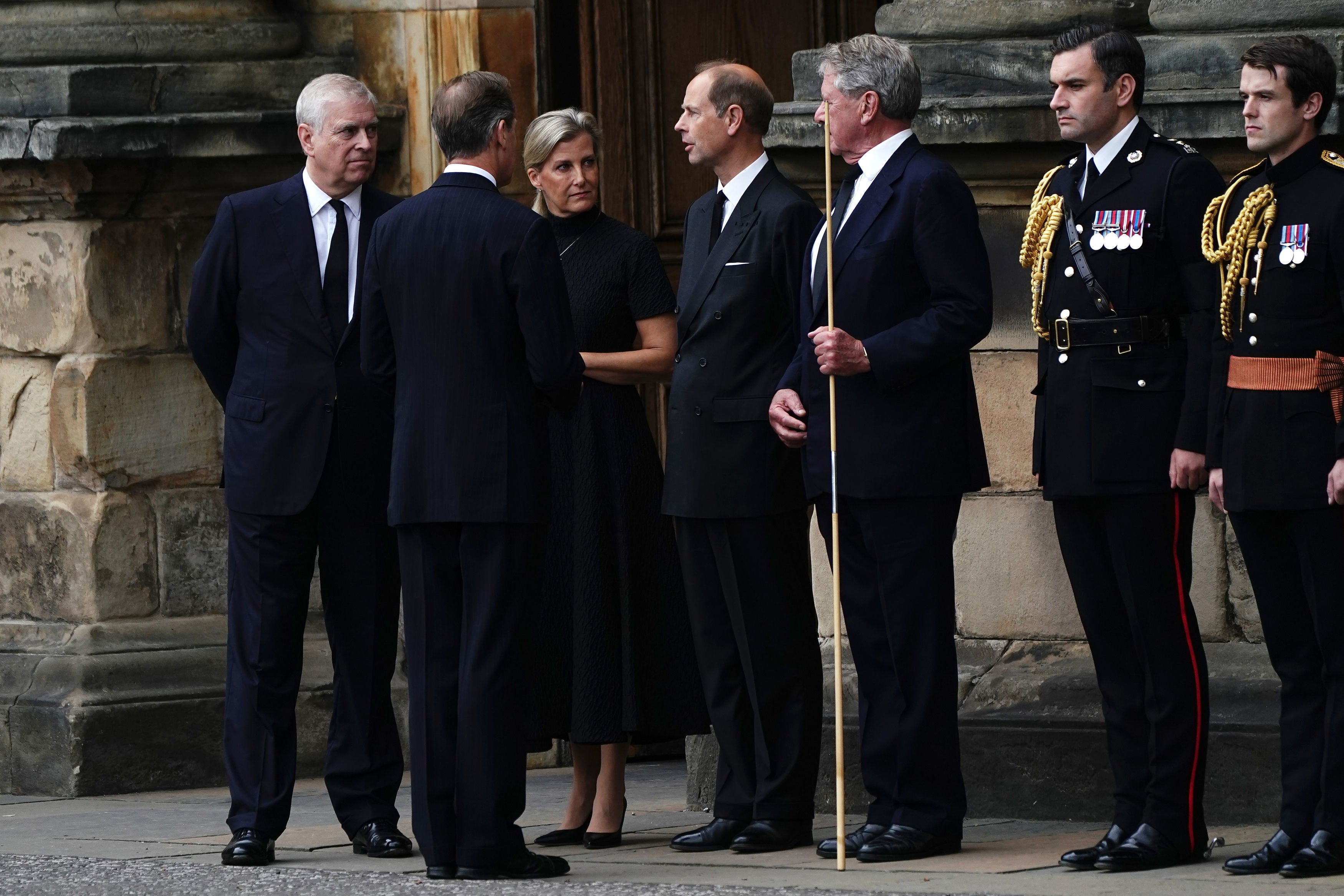
“There aren’t many people that remember someone other than Elizabeth being Queen. It’s a strange time,” her daughter, Rhona, said.
“In life, you rarely have anybody for 70 years, for your whole life, everything changes. So far as a public figure, that is very rare,” said Spencer Hammond, 51, who was visiting from Oregon, USA.
The hearse set out from Balmoral Castle at around 10am and the wreath placed on the coffin was made up of flowers from the Queen’s beloved Scottish estate, including white heather, pine fir, phlox, dahlias and sweet peas.
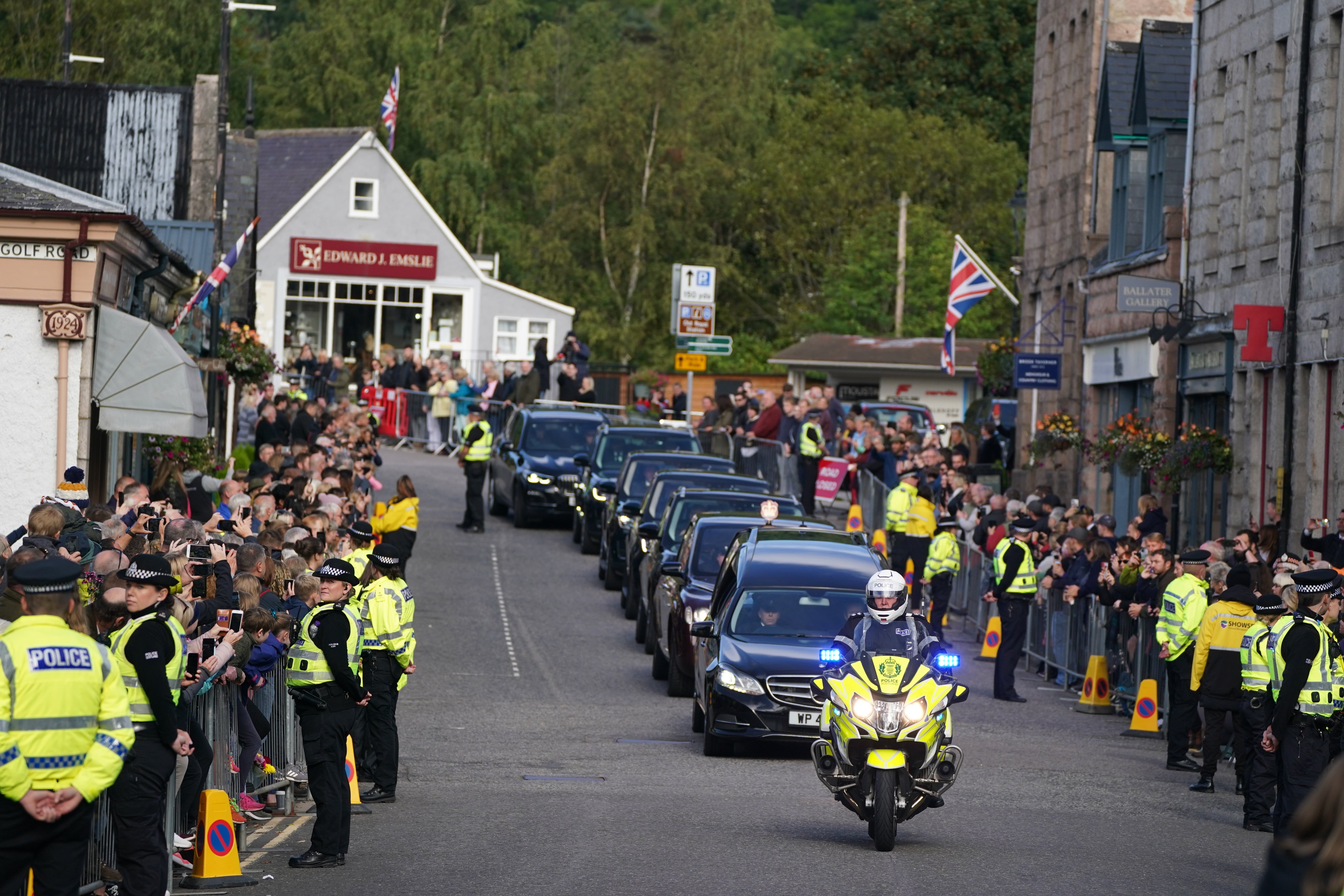
It then reached the nearby village of Ballater, where locals said they felt that the royals were just like neighbours.
Richard Baird, commander of Clan Baird and a member of the Queen’s ceremonial bodyguard, said the royals had been “very relaxed” at Balmoral.
“The right place for the Queen to depart this world was in Scotland and was in Aberdeenshire at Balmoral,” he added. The Queen is the first British monarch ever to die in Scotland.

Reverend David Barr, of the local Glenmuick church, said his community was experiencing “a really deep-down grief” for one of their own. “It’s a really tight-knit community and she is part of it,” he said.
From Ballater, the coffin was driven through the village of Aboyne. Flowers were thrown over the Queen’s car in Banchory, and it then headed east to the port city of Aberdeen.
At the King George VI Bridge over the River Dee, the crowds were silent as the Queen’s cortege drove past. The procession then hugged the east coast of Scotland, passing through Dundee and Perth on its way to Edinburgh.
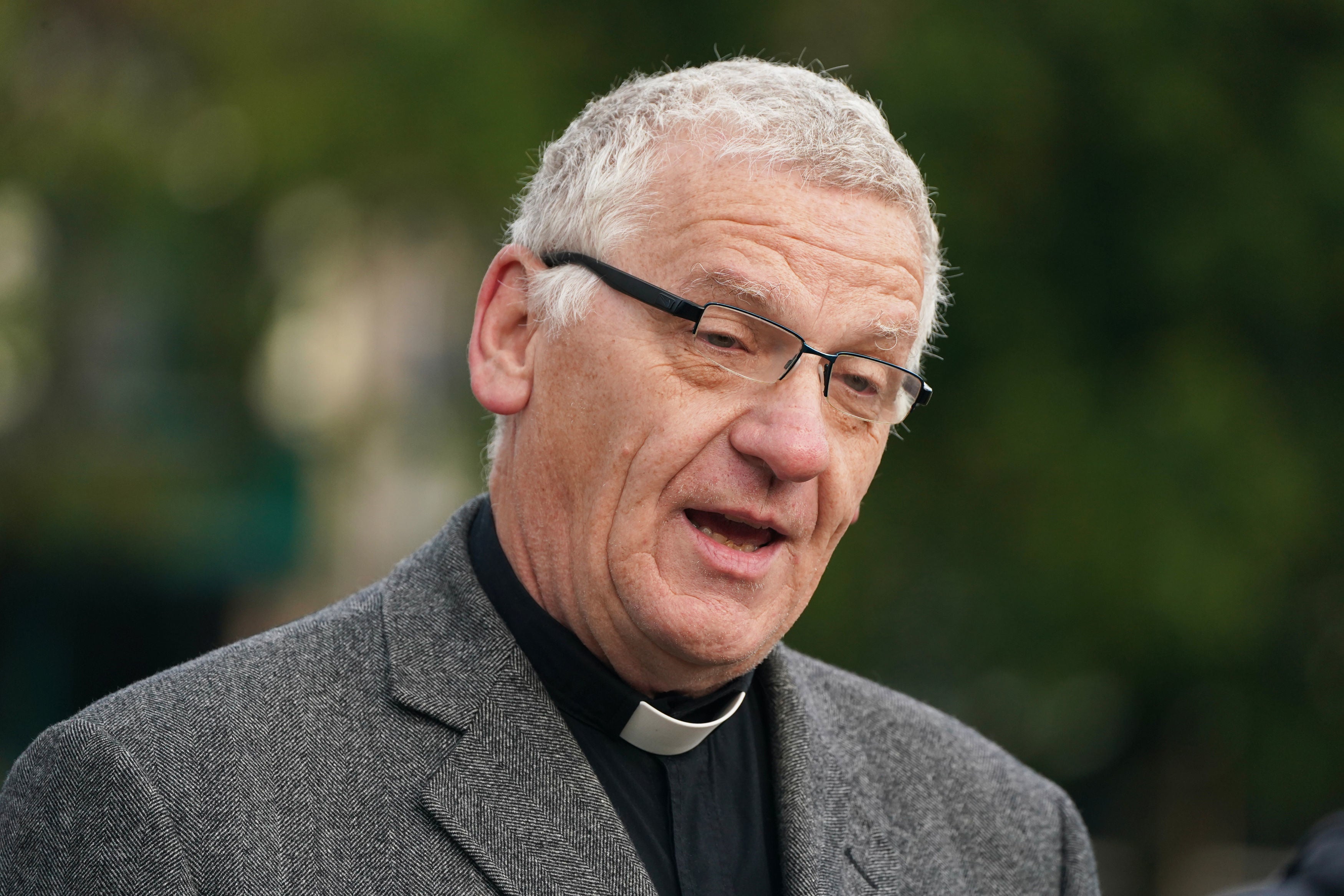
At one point, as the cortege travelled through Dundee, a lone long-stemmed flower could be seen on the hearse windscreen and, in a rural part of the route, farmers paid homage to the Queen with tractors lined up to greet her.
The Queen did not travel alone during her journey, with the Princess Royal and her husband in a limousine directly behind her.
Thousands of people packed out the bridges that crossed the M90, the motorway that the Queen’s coffin drove down from Perth to Edinburgh, and many brought union jacks Scotland’s first minister Nicola Sturgeon paid tribute to the Queen, saying it was a “sad and poignant moment as Her Majesty leaves her beloved Balmoral for the final time”.
“Scotland will pay tribute to an extraordinary woman,” she said.
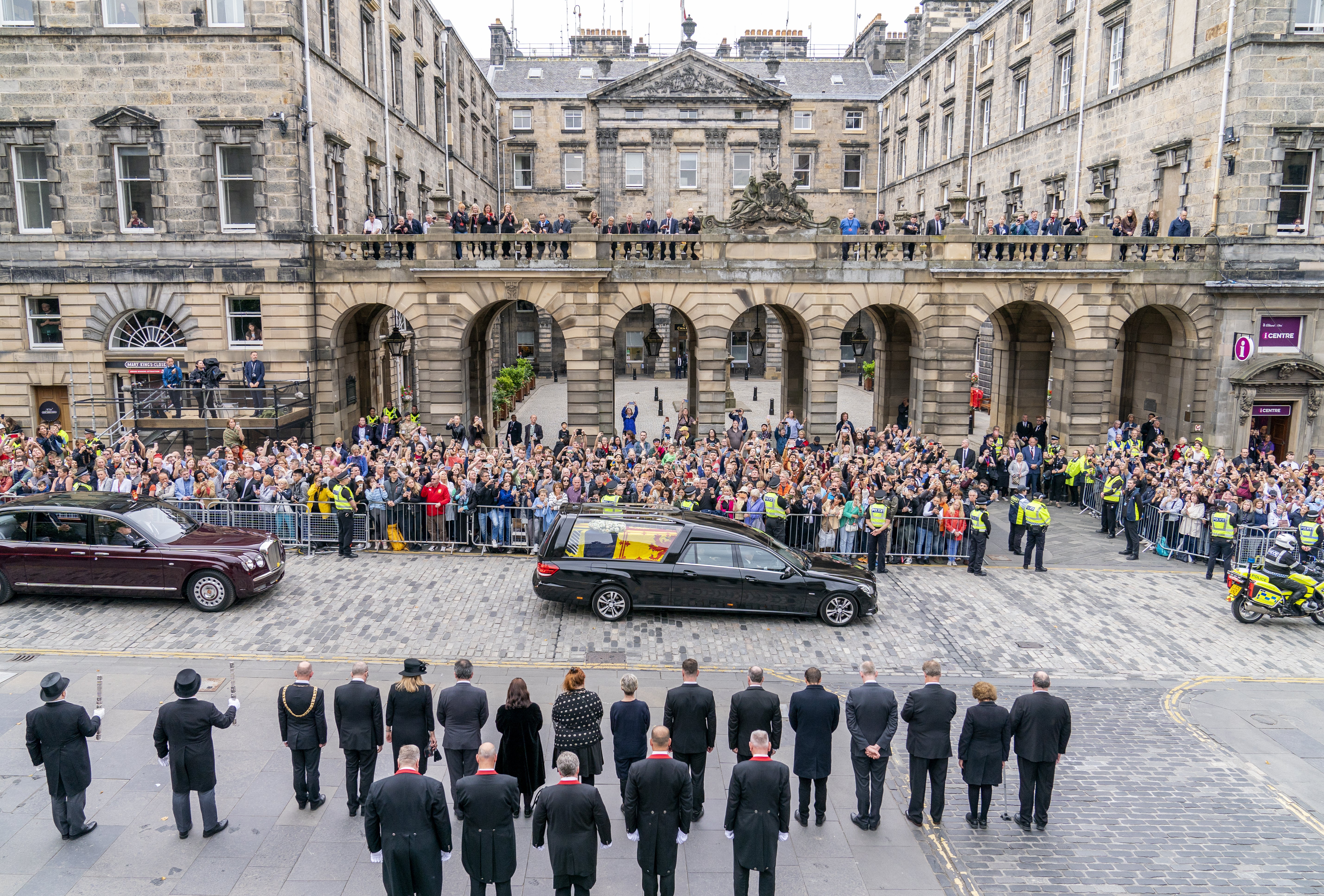
Meanwhile, in London, King Charles welcomed high commissioners of Commonwealth countries to Buckingham Place, where he also met the organisation’s secretary general Baroness Scotland and foreign secretary James Cleverly.
Thousands of people thronged outside the palace, cheering as the new King waved as his black car drove down The Mall.
The prime minister of Antigua and Barbuda said that following the Queen’s death, he will call for a referendum on the country becoming a republic within three years.
The Caribbean country is one of 14 nations to retain the British monarch as head of state. Gaston Browne’s comments came shortly after he signed a document confirming Charles’s status as the new King.

Thousands of mourners laid flowers, cards and stuffed animals outside the gates of Windsor Castle, while others lit candles in the Berkshire town’s churches.
At a service of thanksgiving at Canterbury Cathedral, the archbishop of Canterbury, Justin Welby, said that the transition from Elizabeth II to Charles III showed that “we have continuity, we have stability through grace”.
The archbishop said that people who met the Queen were “always struck by her ability to make them feel as though they were the most important, the only person in the room, the only person in the street, in the crowd”.
He told the congregation: “King Charles III has the same ability to see the value of each person as God sees them.
“That is his conscious understanding of people.”
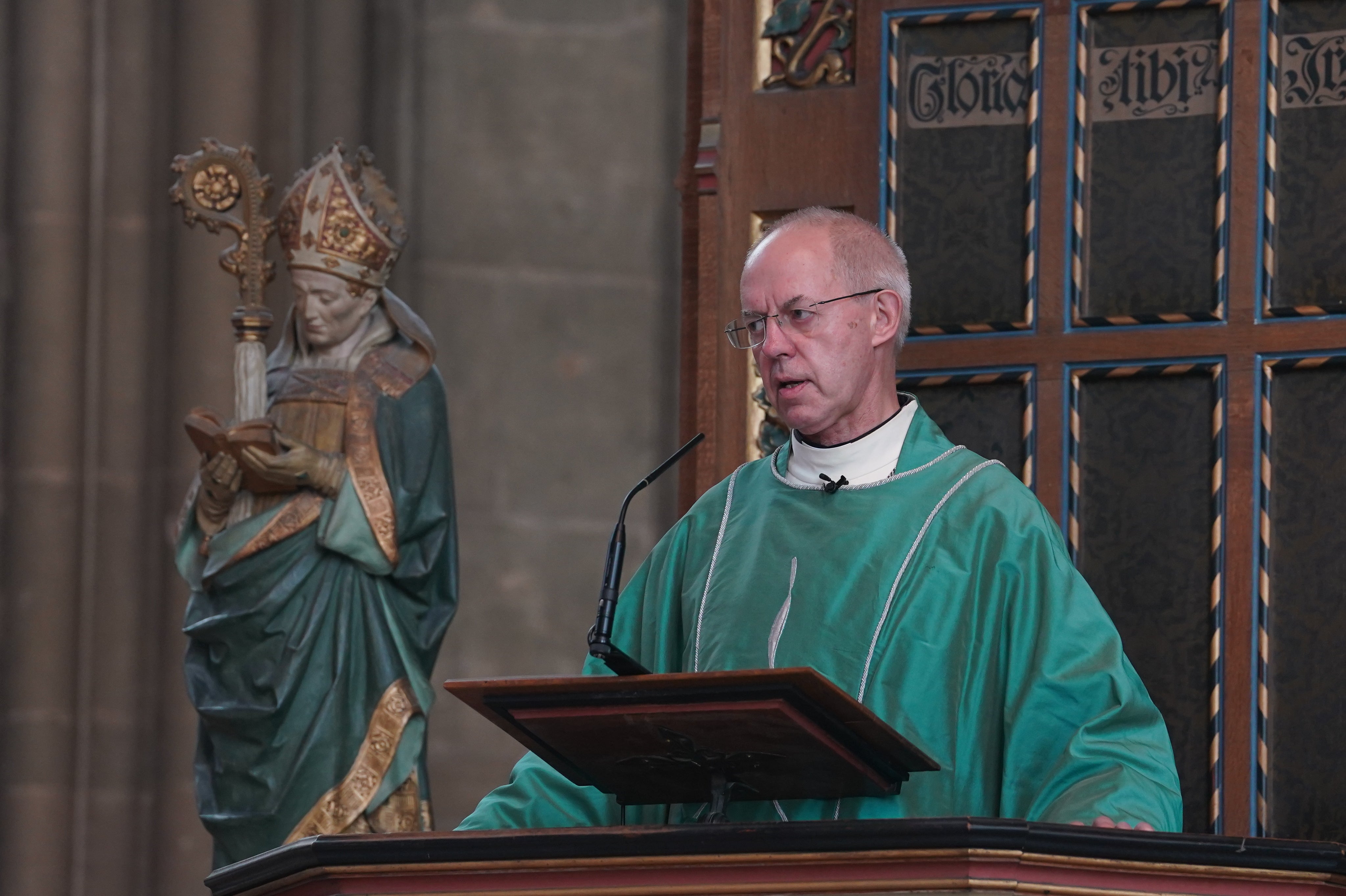
The proclamation of the accession of the new King was read to the people of Northern Ireland at Hillsborough Castle, followed by a 21-gun salute. It was also declaimed in English and Welsh at Cardiff Castle.
Sinn Fein said it would not take part in accession ceremonies but would participate in a number of events of mourning for the Queen.
“We acknowledge the very positive role the Queen played in advancing peace and reconciliation between our two islands, and the two traditions on our island, during the years of the peace process,” said the party’s president Mary Lou McDonald.
“The accession proclamation ceremonies are intended for those whose political allegiance is to the British crown.”
Prince William spoke to Welsh first minister Mark Drakeford by phone, vowing to serve the Welsh people with “humility and great respect” in his new role as Prince of Wales.
William said that he and his wife Kate – now the Princess of Wales – had “deep affection” for the country, having made their first family home in Anglesey.
Join our commenting forum
Join thought-provoking conversations, follow other Independent readers and see their replies
Comments

Bookmark popover
Removed from bookmarks